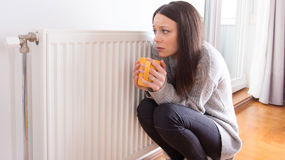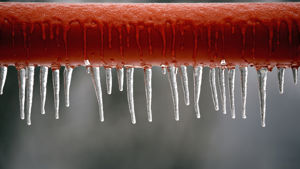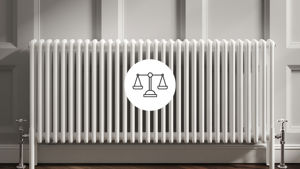When your radiator isn't working it can often seem like a difficult problem to diagnose and fix. However, with a few simple checks, a radiator can usually be fixed.
Diagnosing The Problem
The first thing you need to do to get your radiator working is check your whole heating system. With the heating on, go around your home and check whether it's just the one radiator not working, or multiple. Once you've determined which radiators are working, use the links below to start fixing the problem!
All Radiators Not Working
If all your radiators aren’t working, you’ll need to check your whole heating system by following the steps below:
1. Check Your Boiler Is On & Functioning Correctly
If all your radiators aren’t working, the problem could be with your boiler. First, check that your boiler is running correctly. Is the pilot light on and does it sound healthy? If it isn’t running correctly or an error code is displayed, try resetting the boiler. If that doesn't work, it may be time to call in a professional.
It's also important to check the settings on your boiler. Check it is set for hot water and heating. Many boilers will have a ‘summer mode’ which will give you hot water without running the central heating system.
If you have a combi boiler or high pressure system, check the pressure gauge on your boiler. If the pressure is too high or has dropped too low, the boiler will cut out as a safety measure, so your radiators won’t work. You should find instructions to fix this problem in your boiler manual.
The last thing to check is whether you are able to get hot water from your taps. If not, it's likely the issue is with your boiler.

2. Check Your Heating Settings
This may sound obvious but in our experience radiators not working can be caused by incorrect settings. If you have your heating system on a timer, check the timer is working correctly and is set to the correct time. If you have any wireless thermostats for your boiler, it’s also important to check these are communicating with your boiler correctly and haven’t been turned down. Your boiler should also have its own temperature setting and you may need to increase this.
3. Balance Your Radiators
If multiple radiators in your home aren’t working, you may need to ‘balance’ the system. Unbalanced radiators won’t heat up at the same time, so if you have some radiators which are very warm and others which are cold, this could be the issue. As hot water will rise, one sign your radiators need to be balanced is warm radiators upstairs and cold radiators downstairs.
We have a comprehensive guide on how to balance your radiators here.
4. Bleed The System
If multiple radiators in your home are cold, this could be a sign there is air trapped in the system. Air inside radiators will lead to cold spots where water can’t circulate, which will reduce their efficiency. To bleed the radiators in your home you will first need to diagnose which radiators are colder.
Take a radiator key and fit it onto the bleed valve of the radiators which are cold. Turn the key slowly until you hear air being released from the valve. Once you can no longer hear air being released or water begins to come out, you’ve successfully removed the air and can close the valve. Doing this for all the radiators that are cold should get your heating system working correctly.
We have an in-depth guide to bleeding radiators here.

One Radiator Not Working
If you have 1 radiator not working, you should be able to fix the problem yourself. Below we’ve outlined how you can fix common causes of individual radiators not functioning as they should.
Whole Radiator Is Cold
If your whole radiator is cold it could be an issue with the thermostatic valves.
First, check to see if the valve on your radiator is turned to the on position, turn it to the highest temperature if required. If your radiators still don't warm up, it could be that your thermostatic valves are stuck.

Thermostatic valves control the flow of water into your radiator. Sometimes with age they can seize up and will no longer allow water to flow. To check your thermostatic valves follow the steps below:
- Remove the thermostatic valve head. Underneath you will see a raised pin.
- Check the pin to see if it moves up and down. You should be able to depress it with your finger and it should then rise up again.
- If the pin is stuck, give it a light tap to try and release it. Be careful when doing this as depressing the pin too hard can cause it to break, which will lead to water flowing out of the opening.
If you aren't able to release the pin, your thermostatic valve could be faulty requiring a replacement.
Radiator Cold At The Top
If the top of the radiator is cold but the bottom is warm, there may be trapped air inside radiator preventing water from flowing round it correctly. To remove this trapped air you will need to bleed the radiator, which is a simple process you should be able to complete yourself.
Radiator Cold At The Bottom
When your radiator is cold at the bottom, this is usually caused by a build up of sludge composed of rust and dirt in your system. This sludge is heavier than water so will sink to the bottom of your radiator, preventing heat flow and making the bottom of the radiator cold.
To fix a cold radiator bottom you will need to flush the sludge. To do this, turn off your heating system and turn off the valves on the individual radiator to isolate it from the rest of the heating system. You will then be able to bleed & drain the radiator, remove it to clean out the sludge then reattach it.
We also have a handy guide taking you through the process of flushing your radiator.
When a radiator isn’t working it can often be a frustrating experience, however we hope this guide has helped you fix your radiator issues. If you are unsure about fixing any of the problems with your radiator, we’d always recommend calling in a plumber to give you a professional opinion.








